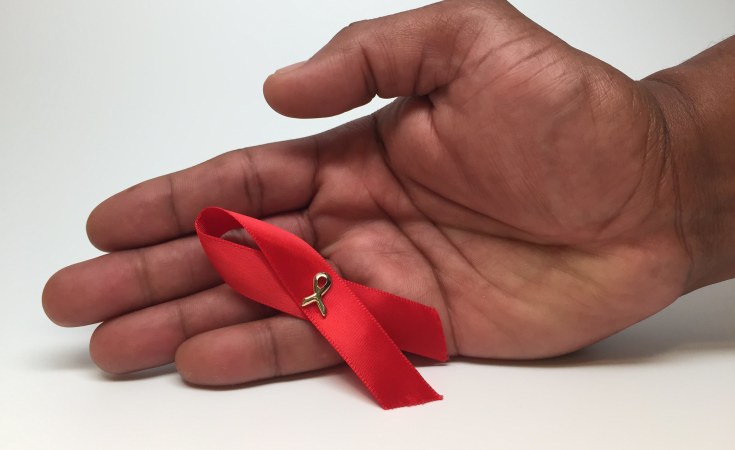When Minne Gachau's husband died from AIDS-related complications in 2006, she was still in denial about being HIV-positive herself - too scared to confide in friends and relatives in her home in Nakuru, a city in Kenya's Rift Valley.
It was only after the couple's young son also tested positive and started to receive antiretroviral treatment that Gachau sought the life-saving medication for herself - four years after her initial diagnosis.
"(Without it) I would be long dead and forgotten," Gachau told Openly at a candle-lighting ceremony to commemorate people who have died from AIDS-related illnesses in Nakuru.
Now 47, she has remarried and had another child, who was born HIV-negative, and she works with pregnant women to prevent HIV transmission to their babies.
Gachau is one of the nearly 1.3 million Kenyans who have received HIV/AIDS treatment through a programme launched in 2003 by then U.S. President George. W. Bush and renewed in five-year cycles ever since.
But in a change that has worried many beneficiaries of the programme, called the President's Emergency Plan for AIDS Relief (PEPFAR), the U.S. government renewed its funding in 2023 for just one year after resistance from some Republican lawmakers.
Baulking at the five-year renewal, they said the programme should ban any non-governmental organisations that receive PEPFAR funding from promoting or providing abortion services.
U.S. laws already prevent the use of such funding for abortion services and the U.S. State Department says PEPFAR does not fund or provide abortion services.
The shorter renewal has raised concerns about the funding's longer-term future in Kenya and beyond.
"If the U.S. decides to completely withdraw PEPFAR support, many children will be orphaned because their HIV-positive parents will die," said Gachau, whose work with pregnant women - as well as her treatment - is supported by PEPFAR.
Progress on goals
Some 1.4 million people live with HIV/AIDS in Kenya, but the prevalence rate has nearly halved in the past 20 years - to 3.7% in 2023, according to the latest UNAIDS data.
The United States is the biggest foreign contributor towards the HIV/AIDS fight in the East African country, and the funding has helped put it close to reaching the U.N.'s 2025 goals for combating HIV/AIDS.
The so-called 95-95-95 goals aim for 95% of people living with the virus to know their status, with 95% of those diagnosed receiving antiretroviral treatment. Among those who are receiving treatment, 95% should show viral suppression.
Since 2013, Kenya has reduced new HIV/AIDS infections by 78% and HIV/AIDS-related deaths by 68%, said Medhin Tsehaiu, UNAIDS country director for Kenya, crediting donors, including the United States, for this progress.
While there is no indication that the U.S. will pull out completely, the issue has highlighted vulnerabilities in Kenya's funding base, Tsehaiu added.
"There is a need for Kenya to put in place sustainability plans to support the programme because of how heavily dependent its HIV/AIDS funding is on donor support," she said.
'Out of reach'
The news of a reduced funding cycle has concerned those who rely on the programme, like 52-year-old street vendor Dickson Mwaniki, who has been HIV-positive for 19 years. Mwaniki's treatment has suppressed his viral load, allowing his wife to stay HIV-free.
Mwaniki cannot afford to buy antiretroviral medication on his own - on a good day he makes about 1,000 Kenyan shillings ($6.27) selling hot snacks on the streets of Nakuru.
Without any support, a month's treatment costs 5,000 Kenyan shillings, out of reach not only for Mwaniki and many others working in Kenya's large informal economy.
Another recipient of free antiretroviral treatment, a 23-year-old woman who asked not to be named, said she relied on her parents for economic support and might have to turn to sex work if she had to pay for the treatment herself.
As a young woman, she is among one of the groups at high-risk for HIV/AIDS in Kenya, with 26% of new infections in 2019 among girls and women aged 15 to 24, according to the U.S. Agency for International Development (USAID).
At a clinic in Nakuru that has benefited from PEPFAR funding for 10 years, counsellor Philemon Ogola said medical staff now only see one or two new cases a month.
The clinic, which sees about 500 people each year, has reported one death in the last year due to HIV/AIDS-related complications.
"Our measure of success in PEPFAR support is that in our facility we rarely see new cases," Ogola said, adding that he was worried about the impact of any disruption to the funding.
"A majority of my patients that I see are poor people living below a dollar a day," he said. "Seventy percent of them cannot afford (antiretroviral treatment) on their own."
($1 = 159.5000 Kenyan shillings)
This story is part of a series supported by HIVOS's Free To Be Me programme.


